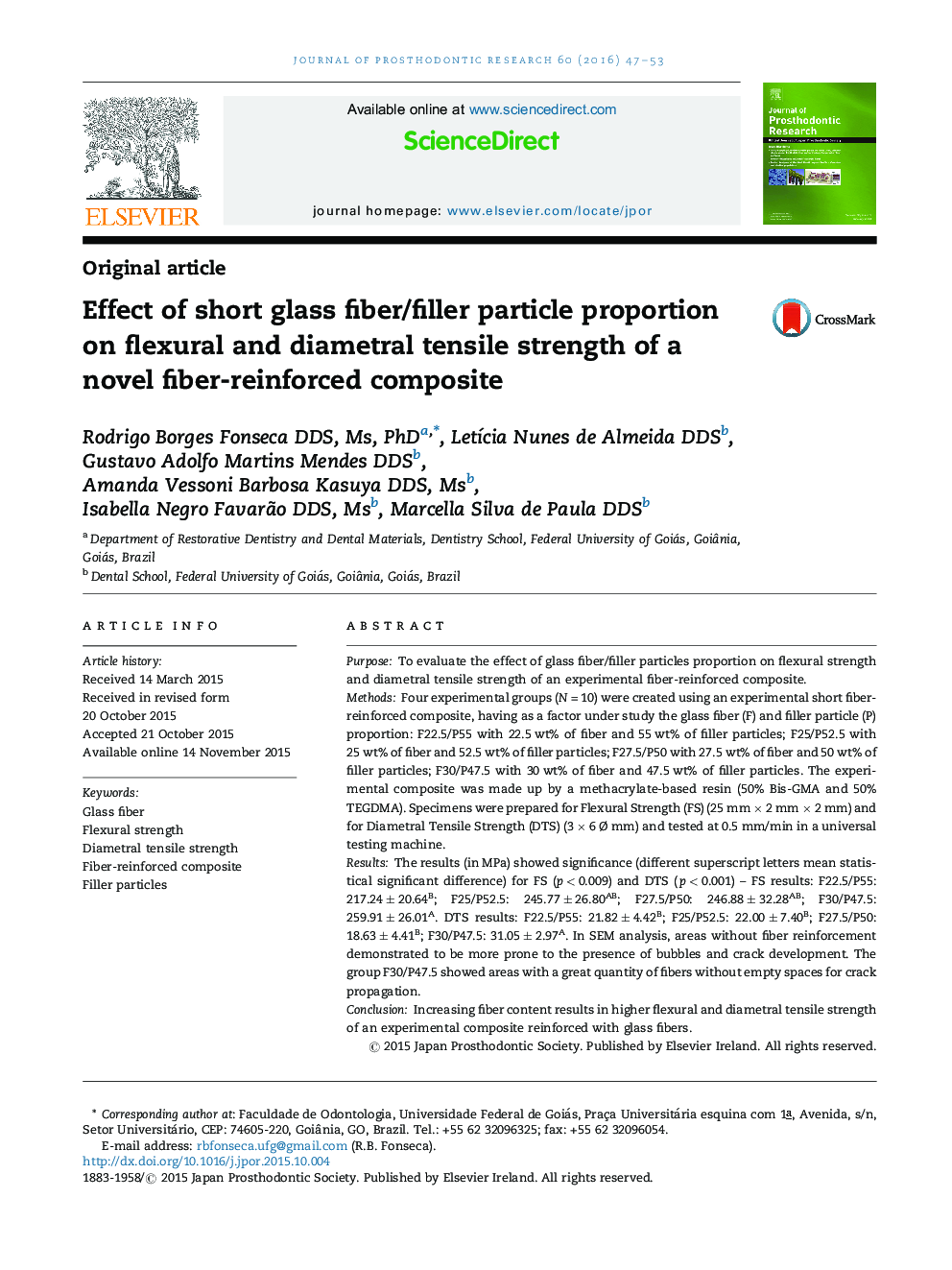| Article ID | Journal | Published Year | Pages | File Type |
|---|---|---|---|---|
| 3160629 | Journal of Prosthodontic Research | 2016 | 7 Pages |
PurposeTo evaluate the effect of glass fiber/filler particles proportion on flexural strength and diametral tensile strength of an experimental fiber-reinforced composite.MethodsFour experimental groups (N = 10) were created using an experimental short fiber-reinforced composite, having as a factor under study the glass fiber (F) and filler particle (P) proportion: F22.5/P55 with 22.5 wt% of fiber and 55 wt% of filler particles; F25/P52.5 with 25 wt% of fiber and 52.5 wt% of filler particles; F27.5/P50 with 27.5 wt% of fiber and 50 wt% of filler particles; F30/P47.5 with 30 wt% of fiber and 47.5 wt% of filler particles. The experimental composite was made up by a methacrylate-based resin (50% Bis-GMA and 50% TEGDMA). Specimens were prepared for Flexural Strength (FS) (25 mm × 2 mm × 2 mm) and for Diametral Tensile Strength (DTS) (3 × 6 Ø mm) and tested at 0.5 mm/min in a universal testing machine.ResultsThe results (in MPa) showed significance (different superscript letters mean statistical significant difference) for FS (p < 0.009) and DTS (p < 0.001) – FS results: F22.5/P55: 217.24 ± 20.64B; F25/P52.5: 245.77 ± 26.80AB; F27.5/P50: 246.88 ± 32.28AB; F30/P47.5: 259.91 ± 26.01A. DTS results: F22.5/P55: 21.82 ± 4.42B; F25/P52.5: 22.00 ± 7.40B; F27.5/P50: 18.63 ± 4.41B; F30/P47.5: 31.05 ± 2.97A. In SEM analysis, areas without fiber reinforcement demonstrated to be more prone to the presence of bubbles and crack development. The group F30/P47.5 showed areas with a great quantity of fibers without empty spaces for crack propagation.ConclusionIncreasing fiber content results in higher flexural and diametral tensile strength of an experimental composite reinforced with glass fibers.
